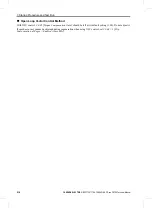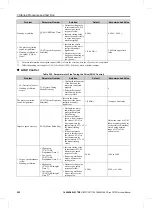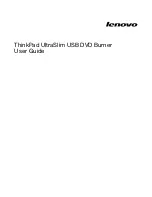
3 Startup Procedure and Test Run
YASKAWA ELECTRIC
SIEP C710617 19A YASKAWA AC Drive CR700 Technical Manual
215
■
The Motor Is Too Hot
Causes
Possible Solutions
The load is too heavy.
•
Decrease the load.
•
Increase the acceleration and deceleration times.
•
Examine the values set in
L1-01 [Motor Overload (oL1) Protection]
,
L1-
02 [Motor Overload Protection Time]
, and
E2-01 [Motor Rated Current
(FLA)]
.
•
Use a larger motor.
Note:
The motor also has a short-term overload rating. Examine this rating
carefully before setting drive parameters.
The motor is running continuously at a very low speed.
•
Change the run speed.
•
Use a drive-dedicated motor.
The drive is operating in a vector control mode, but Auto-
Tuning has not been done.
•
Do Auto-Tuning.
•
Calculate motor parameter and set motor parameters.
•
Set
A1-02 = 0 [Control Method Selection = V/f Control]
.
The voltage insulation between motor phases is not
sufficient.
•
Use a motor with a voltage tolerance that is higher than the maximum
voltage surge.
•
Use a drive-dedicated motor that is rated for use with AC drives for
applications that use a motor on drives rated higher than 400 V class.
•
Install an AC reactor on the output side of the drive and set
C6-02 = 1
[Carrier Frequency Selection = 2.0 kHz]
.
Note:
When the motor is connected to the drive output terminals U/T1, V/T2,
and W/T3, surges occur between the drive switching and the motor coils.
These surges can be three times the drive input power supply voltage
(600 V for a 200 V class drive, 1200 V for a 400 V class drive).
The air around the motor is too hot.
•
Measure the ambient temperature.
•
Decrease the temperature in the area until it is in the specified
temperature range.
The motor fan stopped or is clogged.
•
Clean the motor fan.
•
Make the drive environment better.
■
There Is Audible Noise from the Drive or Motor Cables When the Drive Is Energized
Causes
Possible Solutions
The relay switching in the drive is making too much noise.
•
Use
C6-02 [Carrier Frequency Selection]
to decrease the carrier
frequency.
•
Connect a noise filter to the input side of the drive power supply.
•
Connect a noise filter to the output side of the drive.
•
Isolate the control circuit wiring from the main circuit wiring.
•
Use a metal cable gland to wire the drive.
•
Shield the periphery of the drive with metal.
•
Make sure that the drive and motor are grounded correctly.
•
Make sure that ground faults have not occurred in the wiring or motor.
■
Earth Leakage Circuit Breaker (ELCB) Trips During Run
Causes
Possible Solutions
There is too much leakage current from the drive.
•
Increase the ELCB sensitivity or use ELCB with a higher threshold.
•
Use
C6-02 [Carrier Frequency Selection]
to decrease the carrier
frequency.
•
Decrease the length of the cable used between the drive and the motor.
•
Install a noise filter or AC reactor on the output side of the drive. Set
C6-
02 = 1 [2.0 kHz]
when connecting an AC reactor.
•
Disable the internal EMC filter.
■
Flux Compensation (Current Suppression at Start)
Find motor torque using the following formula.
















































